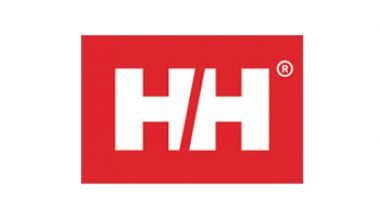Learn to Train
LEARN THE SPORT
The primary goal is to develop solid technical skill execution in all situations and environments at varying speeds. Ski racers begin to understand the use of dynamic, athletic turns in the different training environments. Ski racers participate in local club races exposing ski racers to all disciplines of ski racing including dual and ski cross kombi events. Ski racers are beginning to understand the tactics involved in ski racing as they learn more about the sport of ski racing in a fun and playful environment that promotes self-discovery.
Time on snow is a precious commodity during the winter months. Skiers should aim to complete more than the minimum number of suggested days on snow because time and mileage on snow in the early years is more difficult to replace in the later stages of development.
- Boys 9 -12
- Girls 8 - 11
- Club Level
- Local & Zone racing
- Limited provincial racing
- Stage ends with start of adolescent growth period
.jpg)
Training and Competition
On Snow Days Per Year:
Minimum 60+ days per year. Ski racers are encouraged to ski as often as possible during the ski season and to ski with friends and family even when there is no formal training program. Most ski areas open late November/early December and close late March to mid-April.
Ski racers are encouraged to participate in optional, on-snow offseason camps to boost their number of days on-snow (7 to 10 days). Late spring and summer are perfect opportunities to refine technical skiing skills in a fun, camp environment.
There will be differences in all regions due to the length of the season and the prescribed number of days on snow should serve as the benchmark. Ski racers seeking the competitive pathway will ski more than the recommended minimum number of days on snow. The number of days on snow will vary based on the goals and aspirations of the individual ski racer.
On Snow Volume Recommendations:
- Minimum two days per week and an additional day to promote skiing three days per week throughout the ski season. Night training or Friday afternoon is a great option to easily add more time on snow.
- All activities are FUN based including structured competitions.
- Gate environments should be set according to your provincial course setting guidelines for the Learn to Train stage.
- Drills and courses at the Learn to Train stage should be age appropriate and match the skill level of the ski racer to promote the proper level of challenge and use of the ski to encourage symmetrical carving turn to turn.
- The ski area is the playground: 50 - 65% of the time on-snow should be 'playtime' (structured and unstructured), free skiing in bumps, steeps, terrain parks, trees, and off-piste to encourage the development of spatial awareness, action and reaction, adaptability, balance and athleticism.
General Training:
General training includes technical free skiing, drills, and coursework to apply foundational technical skiing skills in various tactical situations.
- Ski racers should aim to take part in a structured ski club program two, preferably three days per week and ski with parents as often as possible, especially after ski training to practice their newly acquired skills with parents.
- Families are strongly encouraged to seek time on-snow when ski club training is not available. Ski racers should be encouraged to ski with friends and family as often as possible.
- Time on-snow should include structured and unstructured training including, technical freeskiing, skiing in bumps, steeps, terrain parks, trees, and off-piste to encourage the development of spatial awareness, action and reaction, adaptability, balance and athleticism on skis.
- Course sets should be simple and set both rhythmically and arrhythmically in a variety of terrain including rollers, small wave tracks and spines. Introduce delays and combinations.
- Ski racers are introduced to Super G and speed element training.
Competition Specific Training and Competition
Ski racers should be encouraged to compete in a variety of events including:
- Sprint format events with multiple runs per day
- Always race with very little inspection
- Giant slalom and slalom
- Panel slalom and dual "team" events
- Kinder Ski Cross, Kombi GS/SL and Kombi SG/GS
- Speed element skill competitions. Example: an easy glide track with speed measured by a radar gun or a jump competition
- Super G
- Fun moguls and free ski competitions
Competition Starts and Types
Ski racers should complete 10 to 15 training days prior to entering any competition. Ski racers should compete in local club competitions, inter-club events, zone racing and regional/provincial competitions and end of season championships.
Training to competition ratios:
- U10 ski racers should participate in 6 to 8 days of competition throughout the ski season.
- U12 ski racers should participate in 10 to 12 days of competition throughout the ski season.
Set all competition courses according to your provincial course setting guidelines for U10 and U12 ski racers.


